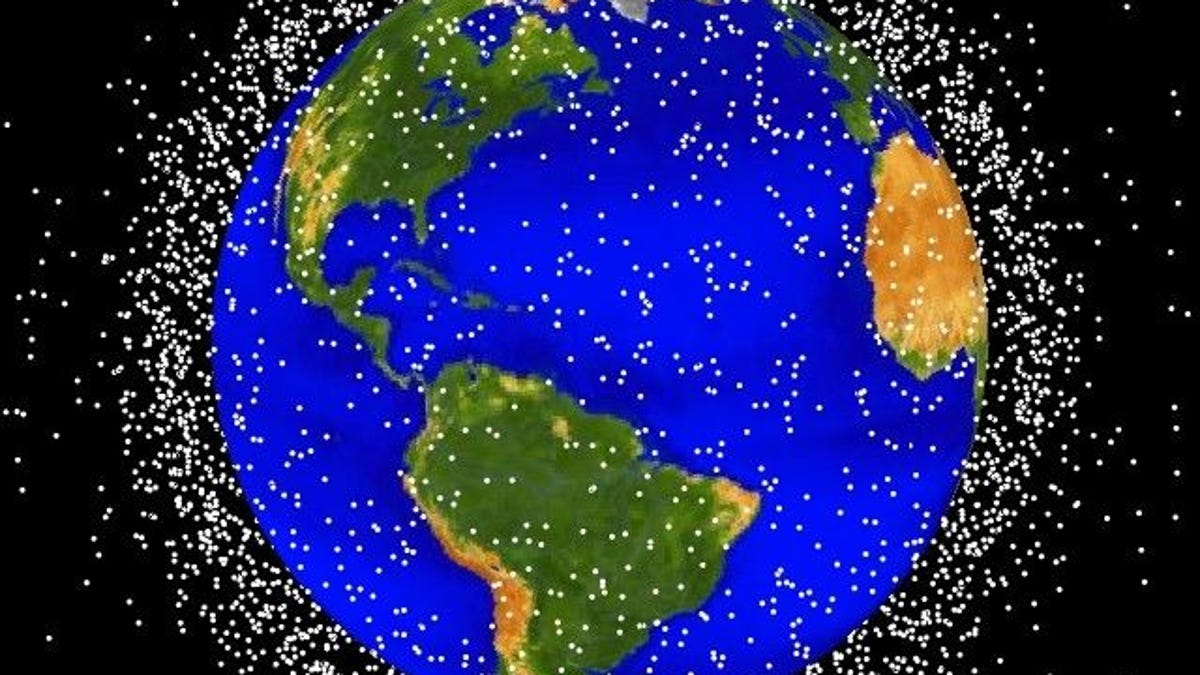China's Tiangong-1 satellite isn't the only space junk above us
It's not just China's Tiangong-1 space station that poses a potential threat. An informal census of debris in orbit finds lots of explosive potential floating around up there.

Orbital debris, not functional satellites, make up 95 percent of the objects in this computer-generated illustration of objects in low-Earth orbit.
Out-of-control Chinese space station Tiangong-1 is set to fall to Earth in the next few weeks, but it's unlikely to cause much damage should it make it all the way to the surface of the planet. There are, however, a number of disturbing hazards among the thousands of pieces of space junk orbiting high over our heads that we wouldn't want falling in our direction anytime soon.
About 23,000 trackable objects currently orbit the planet, according to the latest numbers from the European Space Agency. Last year Harvard astronomer Jonathan McDowell broke down more than 18,000 of those objects as part of an informal "Census of Space Debris" that he presents during lectures.
By his count, about 1,500 objects floating around the Earth are currently active. Think satellites and spacecraft. Putting that in perspective, less than ten percent of the trackable objects currently in orbit are actually useful to us.
Nearly 3,000 hunks of space junk are dead satellites, spacecraft and other payloads that we sent to orbit but are no longer in use.
Some of those are pretty concerning.
A breakdown of currently tracked space junk.
Among the bits of space trash that you wouldn't want to bump into up there or see come ripping down through the atmosphere anytime soon are almost 2,000 rocket stages, more than a dozen nuclear reactor cores and at least 50 freaky liquid metallic blobs of nuclear reactor coolant.
"I think the worst stuff is the biggest stuff, large dead payloads and rocket stages," McDowell told me. "Worst of all is rocket stages with residual propellant, which may later blow up."
Of course, there's also reason to sweat the small stuff.
Although they're likely to burn up completely if they re-enter the atmosphere, about 166 million pieces of space debris less than a centimeter in size are estimated to be circling overhead. All this debris can orbit earth at several thousand miles per hour, acting as tiny little projectiles that can threaten the integrity of operational satellites.
The more debris that takes up space in orbit, the higher the chance of some sort of catastrophe like the collision with a space station that drives the plot in the 2013 film "Gravity." A possible worst case scenario is something called "Kessler Syndrome" in which collisions in low-earth orbit lead to a cascade of more impacts and a proliferation of so much space junk that access to space becomes impossible.
Given our reliance on satellite technology, this could be a major blow to society that would conceivably set us back decades technologically or worse.
Our space junk problem was worsened considerably in 2007 when a Chinese anti-satellite weapon was tested in orbit on a Chinese weather satellite. The space missile destroyed its target and created thousands of new pieces of debris in the process. Just two years later, a collision in 2009 between a defunct, uncontrolled Russian satellite and an active Iridium commercial satellite added to the debris tally.
Unfortunately, space debris is a problem that's only likely to get worse; some researchers have gone so far as to warn it could accidentally trigger war.
It isn't all bad, though. Should you ever find yourself shivering on a future space station mission, you might be able to retrieve one of the three dozen insulation blankets McDowell estimates are now in orbit to warm up the inside of your craft.
Crowd Control: A crowdsourced science fiction novel written by CNET readers.
Solving for XX: The tech industry seeks to overcome outdated ideas about "women in tech."

